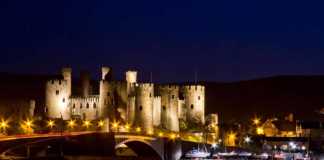French castles, or chateaus, are filled with the romance of old European fairytales. While many were designed as a fortress and stronghold for military purposes, some chateaux were built simply for pleasure or luxury homes. Castles in France constructed for military purposes often sit high atop cliffs with strategic views over valleys, which today draw visitors for their incredibly picturesque vistas. Some are surrounded by fortified walls, which added to the castle’s military might. Aside from their structure, chateaux in France have some of the most incredible landscaped gardens in Europe. Many feature perfectly manicured lawns dotted with statues and fountains and pristinely planted flowerbeds.
Some of the best castles in France have impressive water features or are even built across bodies of water. Europe is filled with amazing castles, and France has a huge volume of them. Chateaux are so plentiful in France that many come onto the real estate market for those who have the money to restore them to their former glory or who want to move into their own fairytale dream home. Here are 20 of the best castles in France to visit.
Contents
- 20 Castles in France
- Famous Castles in France
- Castles in Loire Valley
- More French Castles
- 8- Chateau du Haut-Koenigsbourg
- 9- Chateau d’Annecy
- 10- Chateau de Verteuil
- 11- Chateau de la Roche Courbon
- 12- Chateau des Milandes
- 13- Chateau de Val
- 14- Rocamadour
- 15- Chateau de Queribus
- 16- Chateau des Baux de Provence
- 17- Palais des Papes
- 18- Chateau Comtal de Carcassonne
- 19- Chateau de Flaugerges
- 20- Roquetaillade
20 Castles in France
Famous Castles in France
1- Chateau de Chantilly
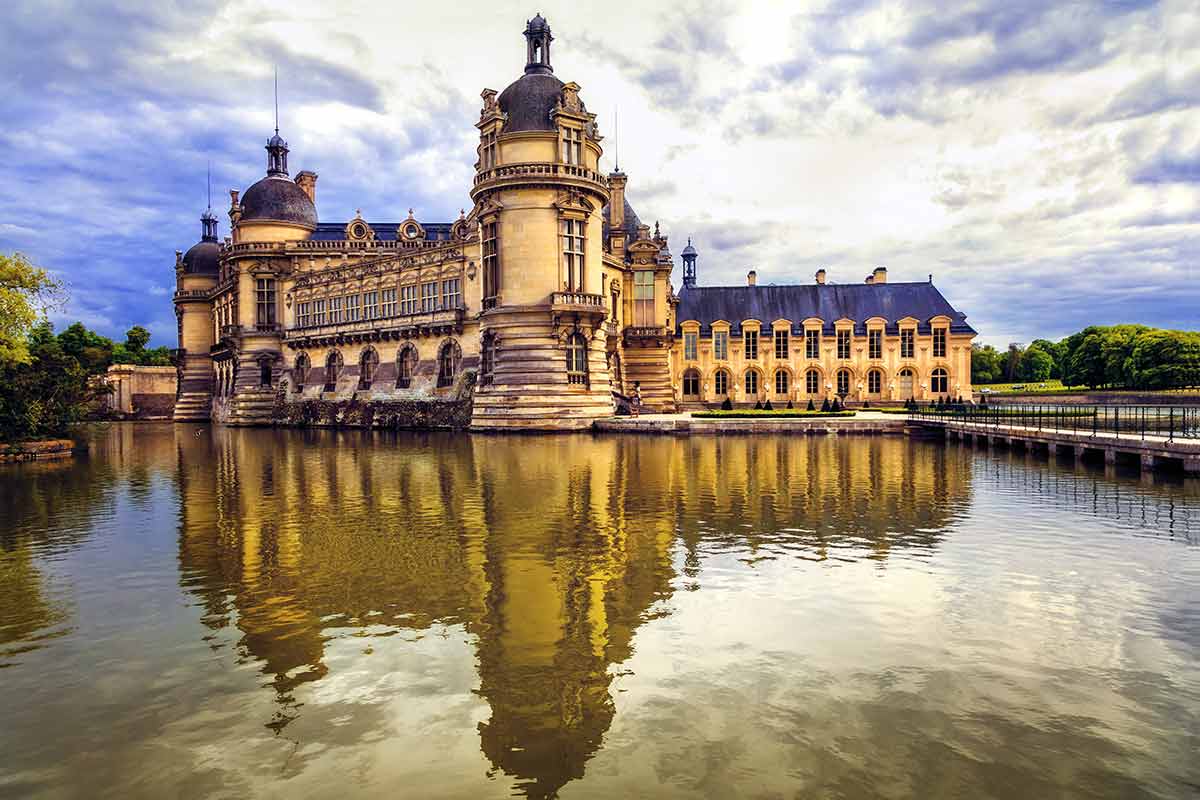
Chateau de Chantilly is formed of two buildings attached together; the Petit Chateau and the Grand Chateau.
The Grand Chateau was destroyed during the 1870s and authorities carried out extensive restoration works to restore this part of the chateau to its former glory.
Today, it has impressively finished interiors packed with incredible works of art, including Botticelli’s Autumn and Raphael’s Three Graces.
Chateau de Chantilly is at 60500 Chantilly.
2- Chateau de Fontainebleau
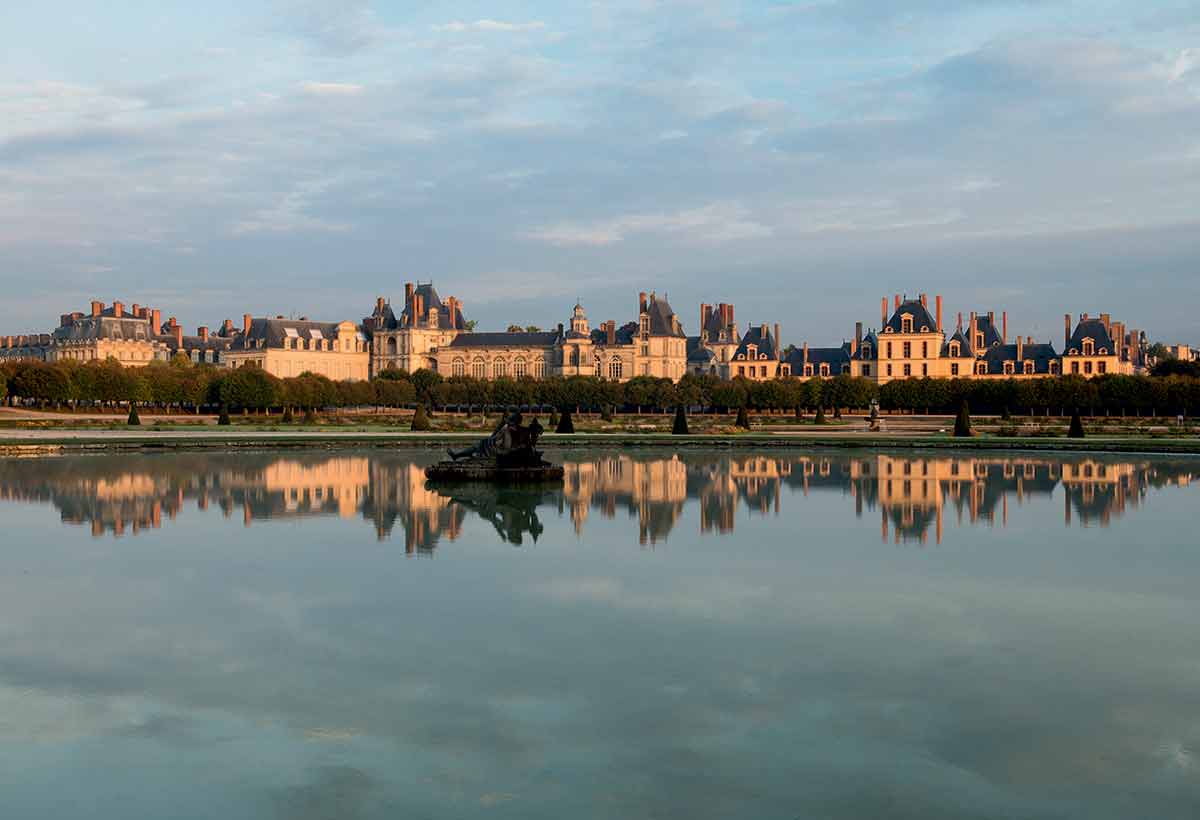
Chateau de Fontainebleau has stood proudly for more than 800 years.
This French castle was primarily a residence for the Kings of France but was also a source of inspiration for many creative geniuses during its history.
Renaissance painters headed to the chateau to study its architectural beauty, as well as the perfectly symmetrical and pristine gardens.
When not playing host to the most influential artists of the time, Chateau de Fontainebleau hosted luxurious balls, concerts and plays.
Chateau de Fontainebleau is at 77300 Fontainebleau.
3- Chateau de Versailles
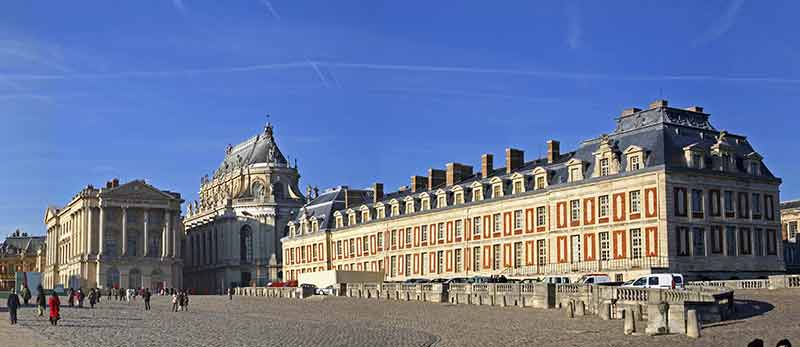
Chateau de Versailles has played an important role in French history since the 17th century.
The chateau serves as a museum today and is one of the most visited landmarks in France.
While many know Versailles for its role in French history, including its roles in the French Revolution, most visitors flock to its hallowed halls for a glimpse of French royal luxury.
The chateau’s gardens are as impressive as the castle itself, with four fountains dedicated to the four seasons.
The fountains were built throughout the 17th century and depict statues linking to the seasons and their bounties.
Chateau de Versailles is at Palace d’Armes, 78000, Versailles.
4- Mont Saint Michel
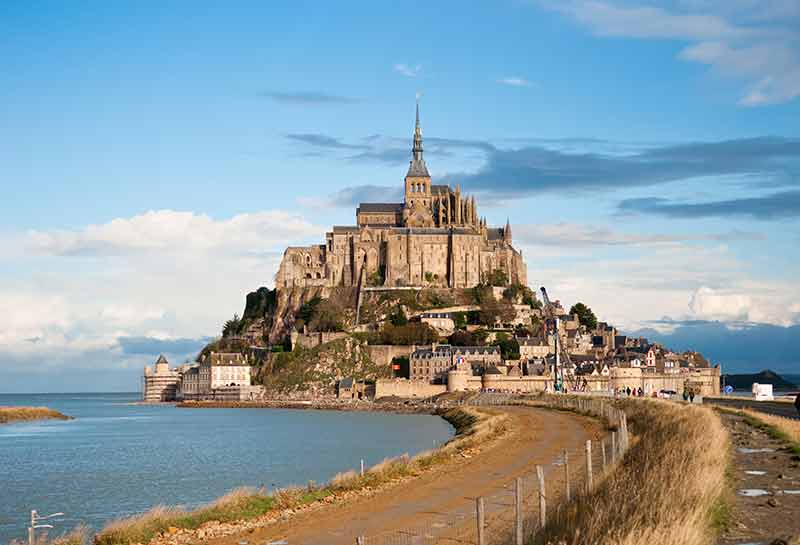
A kilometre (0.6 miles) off the coast of Normandy is Mont Saint Michel, a mysterious chateau on a tidal island of the same name.
Mont Saint Michel has been home to several different groups, including Gallo-Romans and the Franks.
The island and the chateau were not seized during the Hundred Years War due to its extensive fortifications and strategic advantage of being a tidal island.
During WWII, Mont Saint Michel was occupied by German soldiers who used the church spire as a lookout post towards England’s shores.
Allied troops finally seized the chateau towards the end of WWII, capturing German soldiers who had retreated to the safety of its walls.
Mont Saint Michel is at Le Mont-Saint-Michel, Normandy.
For more about France, read:
- 30 France Landmarks
- 26 French Shows On Netflix
- 20 Castles In France
- 20 Beaches In France
- 20 Drinks In France To Try
- 20 Beaches In French Riviera
- 20 Amazing French Cities
- Food in France – 20 Dishes To Try
- Best Time To Visit France
- 15 Things France Is Famous For
- 20 Things To Do In Bordeaux
- 20 Luxury Hotels in Bordeaux
- 20 Things To Do In Marseille
- 20 Luxury Hotels in Marseille
- 20 Things To Do In Le Havre
- 20 Things To Do In Toulouse
- 20 Things To Do In Nantes
- 20 Things To Do In Dijon
- 15 Things To Do In Nice
- 15 Things To Do In Lyon
- 20 Paris Landmarks
- 20 Things To Do In Paris At Night
- Le Marais Walking Tour
- 20 Paris Tours
- Lost in Paris
- L’Hotel Paris Review
- 20 Best Day Trips From Paris
- 20 Paris Winter Attractions
- 20 Paris Museums
- 20 Things To Do In Saint Tropez
- 20 Things To Do In Lille
- 17 Luxury Hotels in Lille
- 20 Things To Do In Strasbourg
- 20 Things To Do In Grenoble
- 20 Things To Do In Montpellier
- 20 Things To Do In Reims
Castles in Loire Valley
5- Chateau d’Amboise

From the 15th to 19th centuries, Chateau d’Amboise was home to the French kings.
The chateau has gone through many transformations over the centuries and has served as the seat for the court of France.
It was also a citadel and the residence for the French royal family.
The castle fell into the monarchy’s control in the 15th century when Charles VII discovered that the castle’s owner, Louis d’Amboise, was convicted for plotting against Louis XI.
The chateau is designed in the French late Gothic Flamboyant style.
Its style, both exterior and interior, has been continually added to over the years.
Inside the chateau are many Renaissance decorative motifs.
Chateau d’Amboise is at Montee de l’Emir Abd-el-Kader, 37400, Amboise.
6- Chateau de Chenonceau
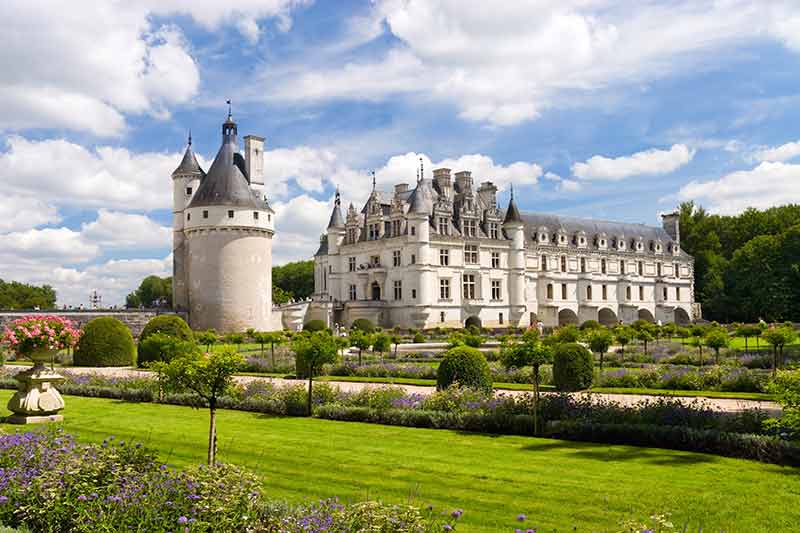
Chateau de Chenonceau is a spectacularly designed chateau that spans the width of the Cher River.
This unusually designed chateau has been written about since the 11th century, however, the current structure dates back to the early 1500s.
The castle was initially built on the foundations of a mill but was expanded to stretch over the river.
Philibert de l’Orme, a French Renaissance architect, designed the bridge that crossed the river.
Jean Bullant designed the gallery that sits on the bridge in 1570.
Chateau de Chenonceau is at 37150 Chenonceaux.
7- Chateau de Chambord
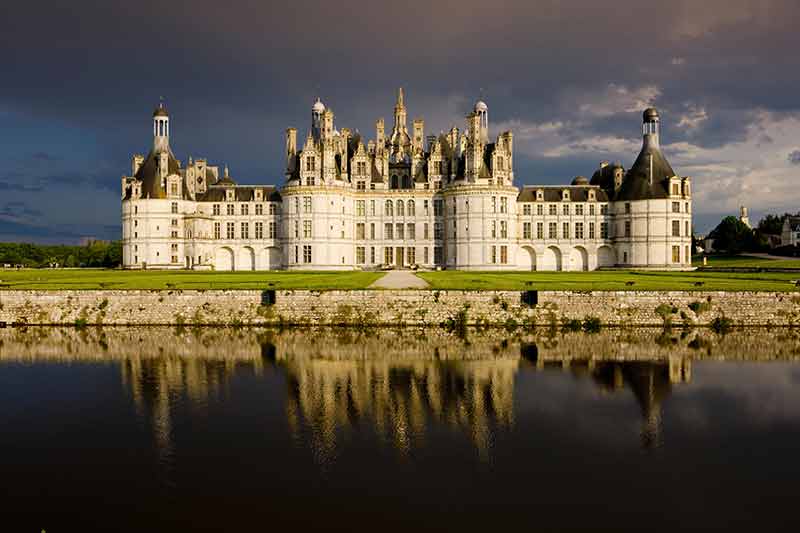
The works of Leonardo Da Vinci inspired the architects behind Chateau de Chambord.
This Renaissance chateau spans more than five centuries of French history.
The influence of Da Vinci can be seen in the chateaus double helix staircase and the double pit evacuation system, which has its own air ducts.
The chateau is filled with unique architectural and artistic detail.
From the multitude of turrets atop the structure to the intricately formed ceiling panels, this chateau is a must-visit for any fans of Renaissance design and architecture.
Chateau de Chambord is at Chateau, 41250, Chambord.
More French Castles
8- Chateau du Haut-Koenigsbourg
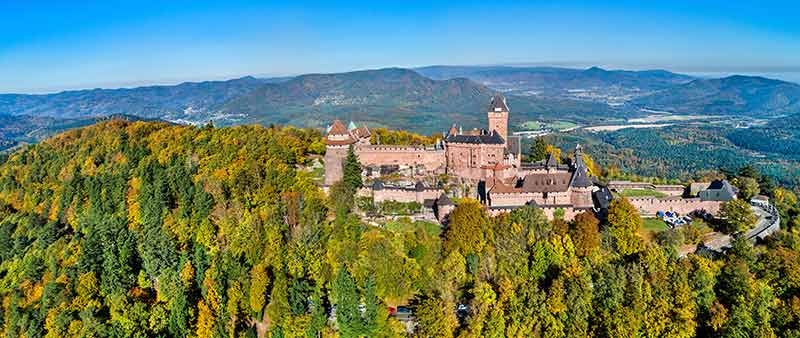
Chateau du Haut-Koenigsbourg dates back to the middle ages. The chateau is a maze filled with inns, a forge and a mill, as well as a full armoury.
The chateau faced pillages, sieges and even partial destruction. Finally, after centuries of turmoil, the castle was abandoned in 1633.
It wasn’t until 1899, when Kaiser Wilhelm II von Hohenzollern took control of the chateau, that restorations began.
Bodo Ebhardt, an architect who specialised in medieval fortifications, restored the castle to its original glory.
There are breathtaking views over the Alsace plain from the artillery platform looking out towards the Black Forest in Germany.
Chateau du Haut-Koenigsbourg is at D159 Chateau du Haut-Koenigsbourg, 67600, Orschwiller.
9- Chateau d’Annecy
Dominating the town of Annecy is Chateau d’Annecy, this imposing restored castle serves as a museum today.
Fortunately, the French Ministry of Culture protects it for its historical importance.
The chateau served as the residence for the counts of Geneva during the 13th and 14th centuries.
Tragically, the chateau was victim to several fires and was abandoned in the 17th century.
During WWII, the chateau was partially repaired and used as a military barracks.
Today the chateau is filled with a range of artistic marvels, including medieval sculptures and regional arts.
Chateau d’Annecy is at Place du Chateau, 74000, Annecy.
10- Chateau de Verteuil
Chateau de Verteuil has existed since 1080 and has been rebuilt and added to several times over its lengthy history.
Nothing remains of the original 1080 structure and the oldest parts of the walls date from the 12th century.
The English occupied the chateau several times during the Hundred Years’ War and it was demolished in 1442. However, the original bricks were saved and were used to rebuild the chateau.
When visiting the chateau, look for the Hunt of the Unicorn tapestries, which hung in the master bedroom and were lost for many years before being rediscovered in 1850.
Chateau de Verteuil is at 6 Rue des Douves, 16510, Verteuil-sur-Charente.
11- Chateau de la Roche Courbon
Chateau de la Roche Courbon sits on a rocky spur.
It was built during the 15th century and transformed in the 17th century into a residence of pleasure.
Pierre Loti Chateau de la Belle Au Bois Dormant filled the palace with luxurious furniture and artwork.
Adding to the luxurious nature of the chateau are its French gardens which have been restored to their original glory.
Within the grounds are caves within the Bruant ice valley, ancient wooden games and a museum of prehistory.
Chateau de la Roche Courbon is at 17250 Saint Porchaire, France.
12- Chateau des Milandes
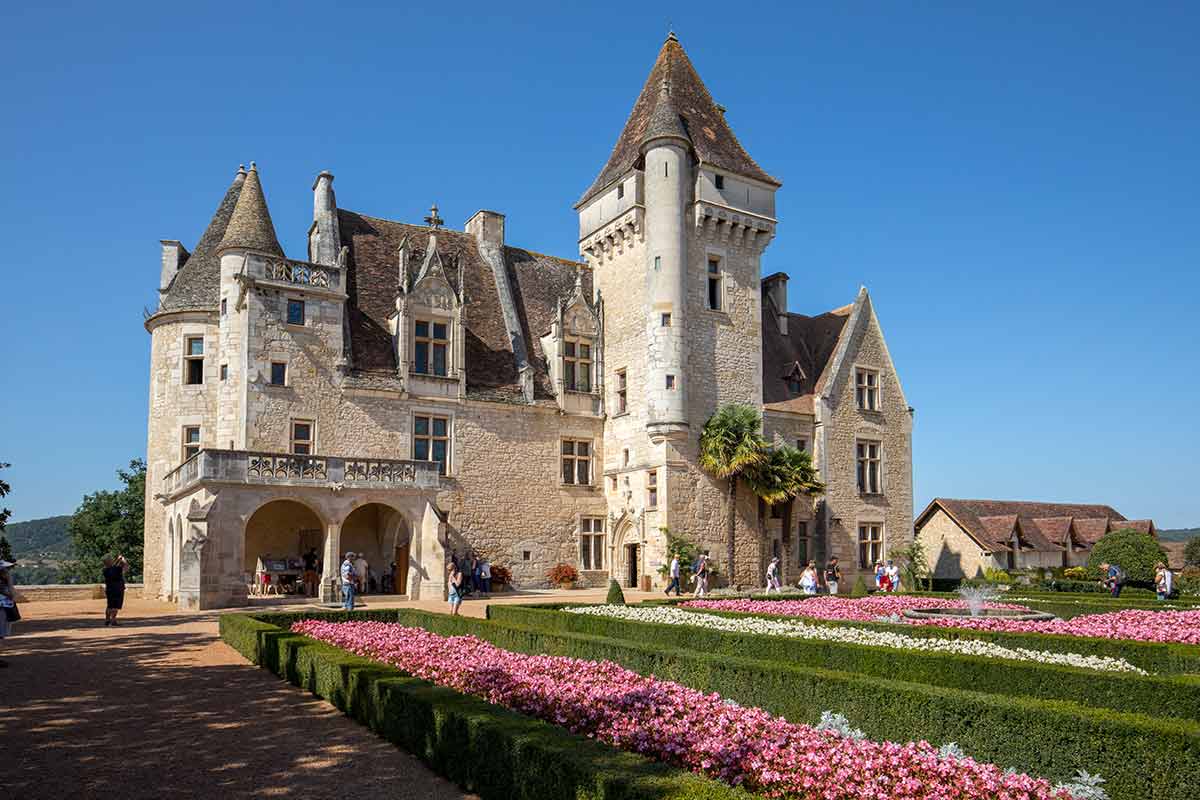
The Caumonts, a French aristocratic family, built Chateau des Milandes in 1489. Lord Francois de Caumont designed the castle as a romantic castle for his wife to live in.
The castle is built from a light coloured stone and has lots of windows and stained glass windows to add in more natural light.
The chateau has retained many original medieval features, including a winding staircase and gargoyles, despite some renovations over its history.
The chateau was once home to entertainer Josephine Baker, whose legacy lives on through displays that follow her extraordinary life.
Chateau des Milandes is at 24250 Castelnaud-la-Chapelle.
13- Chateau de Val
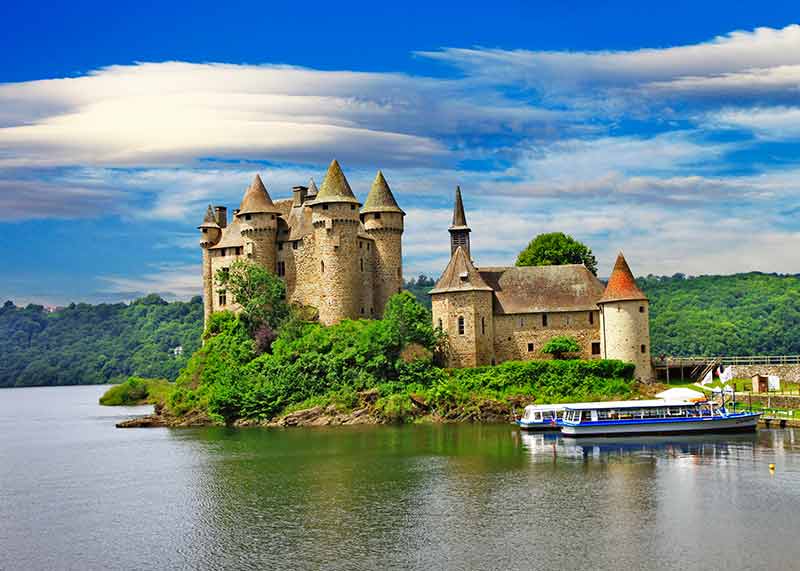
Chateau de Val sits on a peninsula surrounded by an artificial lake and is a stately 15th-century castle with six differently designed towers.
The castle was originally on the edge of a hilltop with a valley below.
The artificial lake was added in 1946 by the electricity board that flooded the valley.
The castle spent years abandoned and fell victim to vandals until it was saved by a local group in 1951, who secured the castle and renovated it.
Today it serves as a popular tourist attraction and is accessible by a newly built walkway that crosses the lake.
Chateau de Val is at Les Fontilles, 15270, Lanobre.
14- Rocamadour
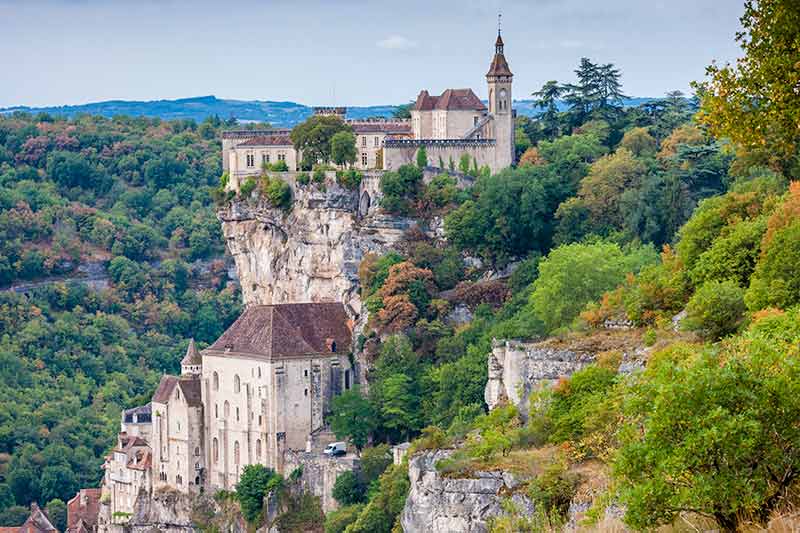
The village of Rocamadour is a sacred place of history and legend.
It sits on a cliff and consists of a large castle with walls bordering the village, imposing towers and old stone houses.
During the Middle Ages, its castle was built as an essential and imposing defensive location with unrivalled views over the Alzou Valley.
Visitors are only able to explore the ramparts, which does offer spectacular views over the valley.
Rocamadour is at Le Chateau, 46500, Rocamadour.
15- Chateau de Queribus
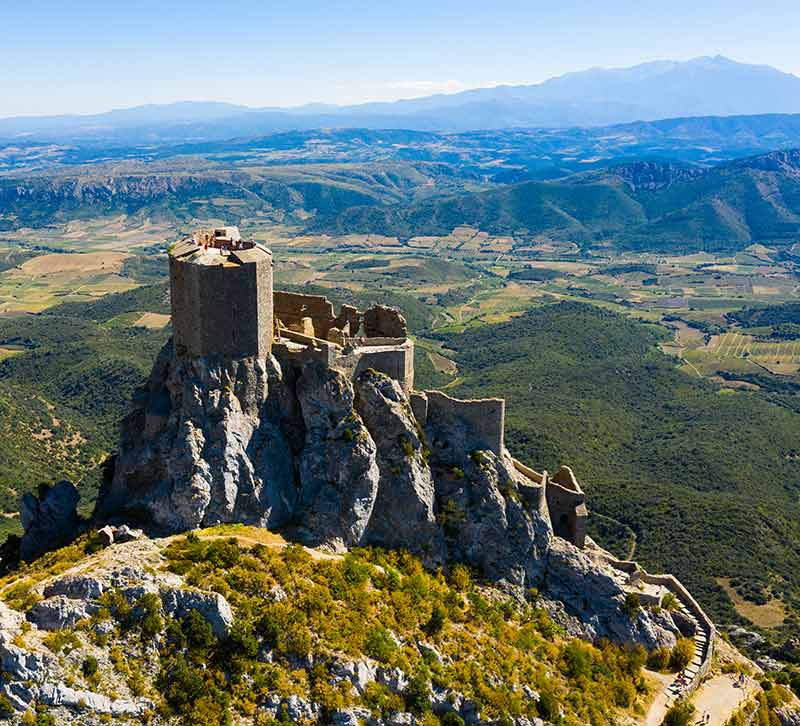
Chateau de Queribus is one of the most visited Cathar castles in the south of France.
The chateau sits atop a rocky ridge and dates back to the 10th century.
While it’s unclear who built it, it did belong to Barcelona (in neighbouring Spain) until the 12th century.
During the crusade against the Cathars, a medieval religious sect in Southern France, the chateau was a haven for Cathars who were escaping persecution.
The castle was actively used until the French Revolution where it was abandoned and subsequently fell into ruin.
Renovations have been carried out on the chateau, with much of the structure remaining intact for visitors to explore.
Chateau de Queribus is at 11350, Cucugnan.
16- Chateau des Baux de Provence
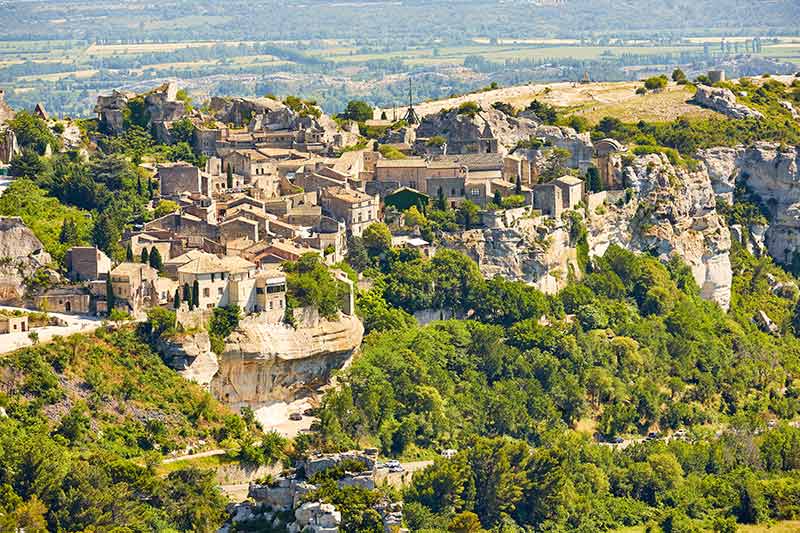
Chateau des Baux has stood since the 10th century.
The fortress overlooks and protects the small town of Les Baux-de-Provence.
The chateau was at the heart of centuries of bloody battles that raged through Provence.
Many minstrels made the chateau famous through songs telling the tales of war and maidens who inhabited this French castle.
Thanks to feuds and wars of religion, the chateau was partially torn down in 1633 on the orders of King Louis XIII.
Today the castle has partially been restored and has the largest trebuchet in Europe.
The catapult has a long arm used to throw a projectile and is used in demonstrations to eager visitors during the summer months.
Chateau des Baux de Provence is at Grand Rue, 13520, Les Baux-de-Provence.
17- Palais des Papes
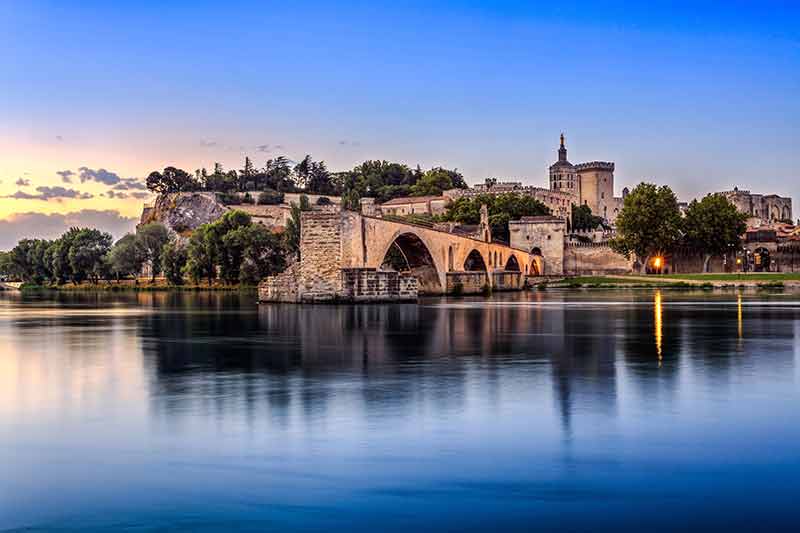
Palais des Papes, whilst not a traditional chateau designed with defence in mind, is one of the most important chateaus in France.
Palais des Papes was the seat of Christianity during the 14th century before this returned to Rome.
Palais des Papes is formed from two joined buildings; the Palais of Benedict XII and the new Palais of Clement VI.
Both structures date from the Middle Ages and are Gothic in style.
Pierre Peysson and Jean de Louvres designed the palais.
Inside this vast structure is a library that was once the largest in Europe. This library was home to papal records and related books on the study of religion.
Palais des Papes is at Pl. du Palais, 84000, Avignon.
18- Chateau Comtal de Carcassonne
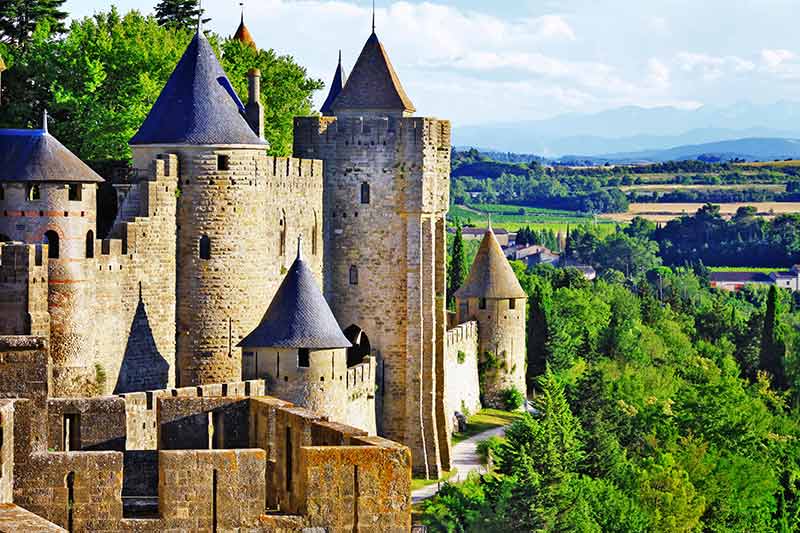
Chateau Comtal de Carcassonne was built during the 12th century and was extensively restored to open its history up to visitors.
Translating to ‘Counts Castle’, this chateau was an important stronghold during the war against the Cathars.
Following damage due to wars and time, Chateau Comtal de Carcassonne underwent one of the most significant restoration projects seen in Europe.
Violet-le-Duc and Paul Boeswillward transformed the chateau back to its medieval style over 50 years, with the project finally being completed in 1911.
Chateau Comtal de Carcassonne is at 11000, Carcassonne.
19- Chateau de Flaugerges
Etienne de Flaugergues built the chateau that bears his name in 1696.
This castle in France is one of many ‘Folies’ or ‘Houses in the Foliage’ built around Montpellier during the 17th century.
The chateau served as a family home for much of its history before becoming a holiday residence in 1811.
The Flaugergues family has retained ownership of the chateau, with this passing between the generations.
It is this family tie that makes a visit to Chateau de Flaugerges so impressive.
Inside the chateau are rare Flemish tapestries and spectacular antique furniture dating back to the chateau’s early history.
Chateau de Flaugergues is at 1744 Av. Albert Einstein, 34000, Montpellier.
20- Roquetaillade
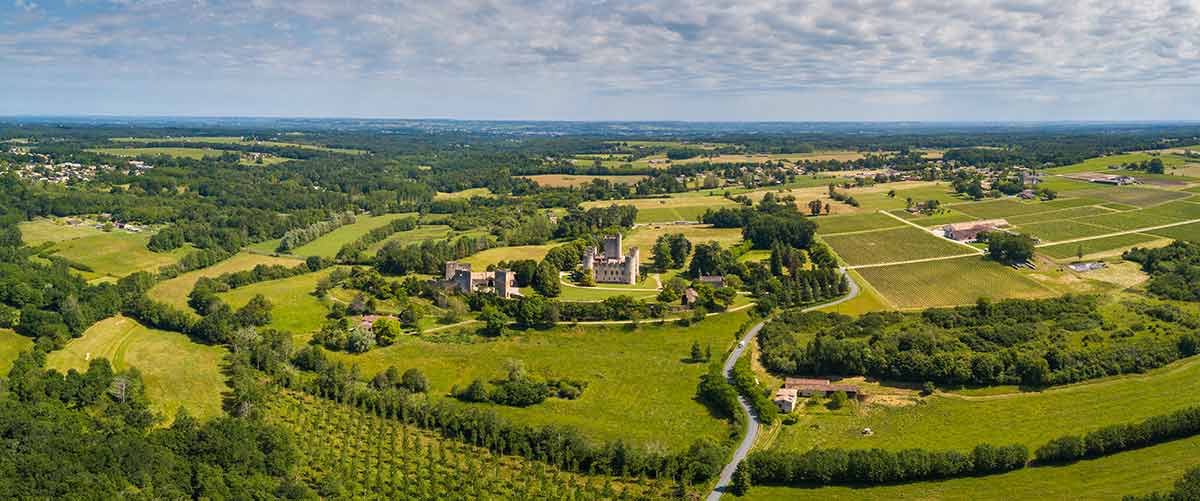
Roquetaillade is a spectacular 700-year-old castle that has remained in the same family’s ownership since it was built.
The chateau is fortified and features original ramparts, towers and dungeons from the Middle Ages.
Eugene Violet-le-Duc, the architect who worked on Norte Dame and designed the inside of the Statue of Liberty, restored the chateau between 1860 and 1870.
The chateau features a surprisingly modern medieval kitchen and unusually designed beautiful stone carvings which hold hidden meanings. For example, one carving depicts a monkey eating fruit.
This carving was a message to future artisans working within the chateau that they would be looked after by the owners and paid well.
Visitors are allowed inside the chateau, however, photographs are only allowed outside.
Roquetaillade is at Roquetaillade, 33210, Mazeres.
Love castles? You’ll want to read about these:
Plan Your Trip

Rent A Car – Find the best car rental rates at Discover Cars. They compare car hire companies to provide you with the best deal right now.

Find A Hotel – If you’re curious about this article and are looking for somewhere to stay, take a look at these amazing hotels.
